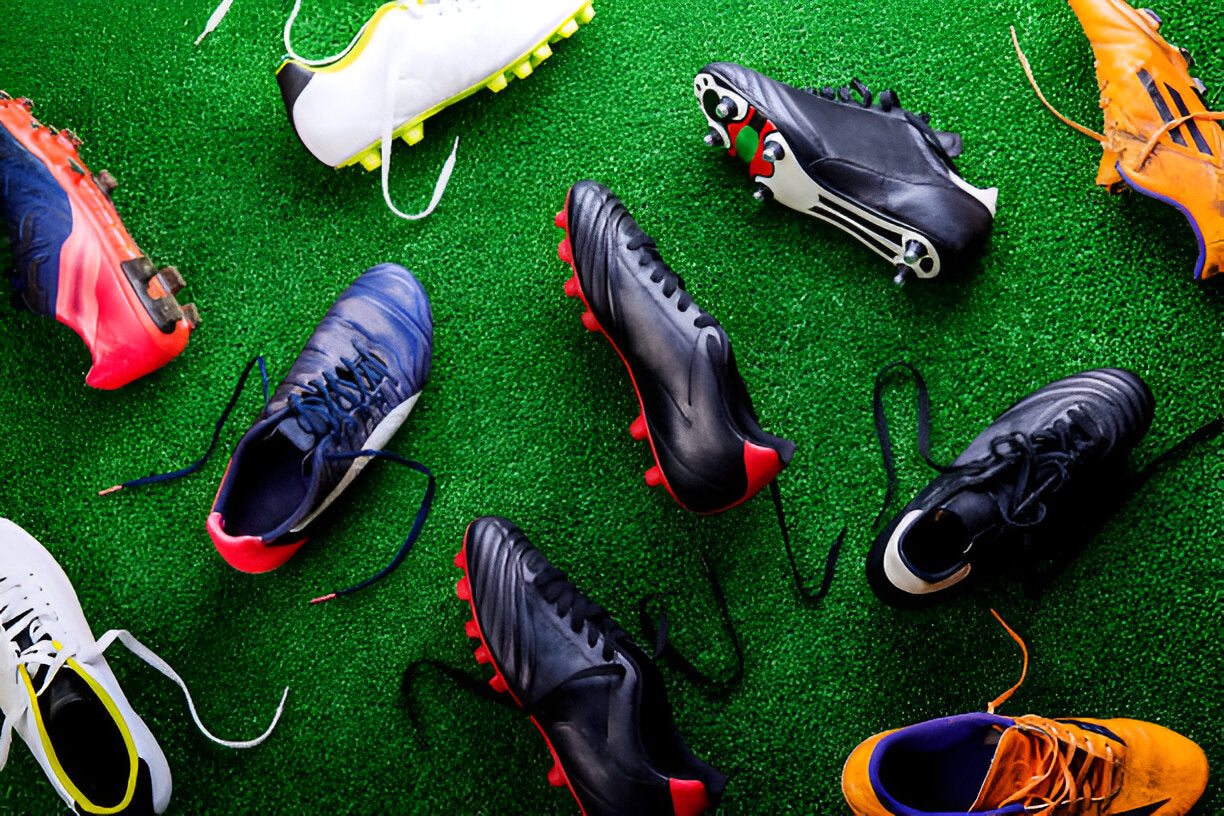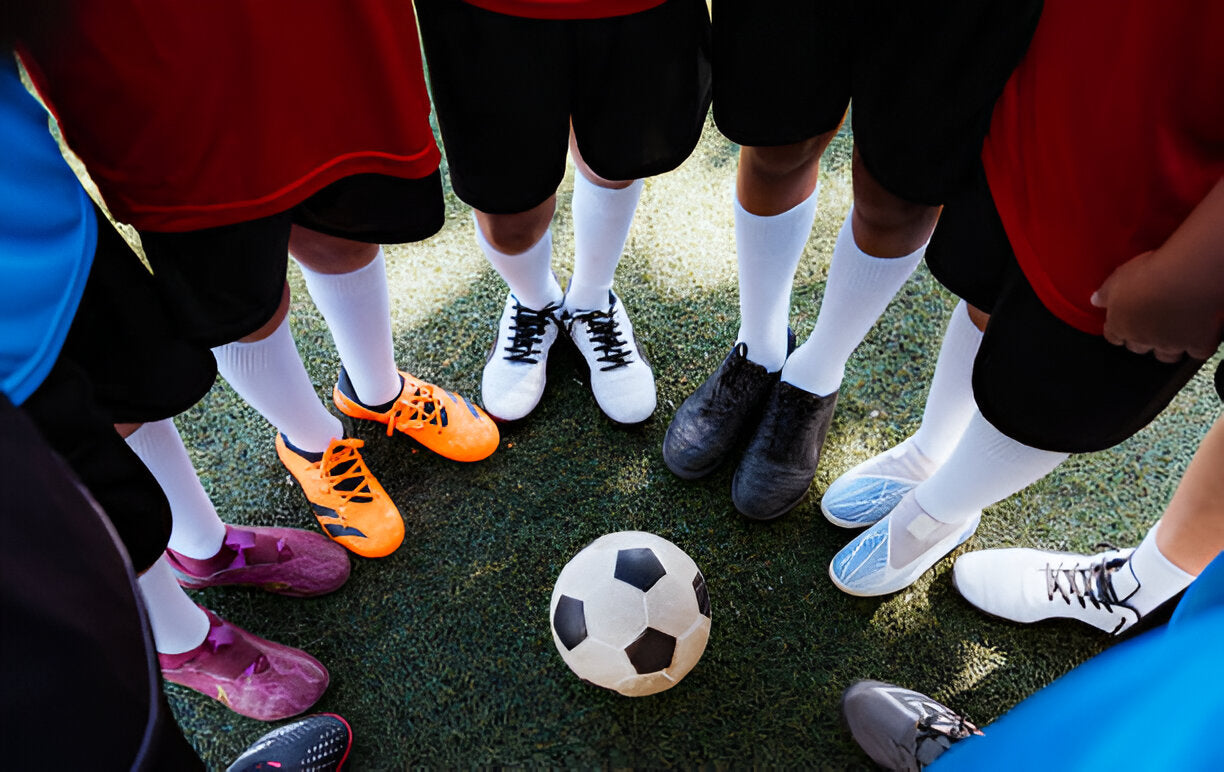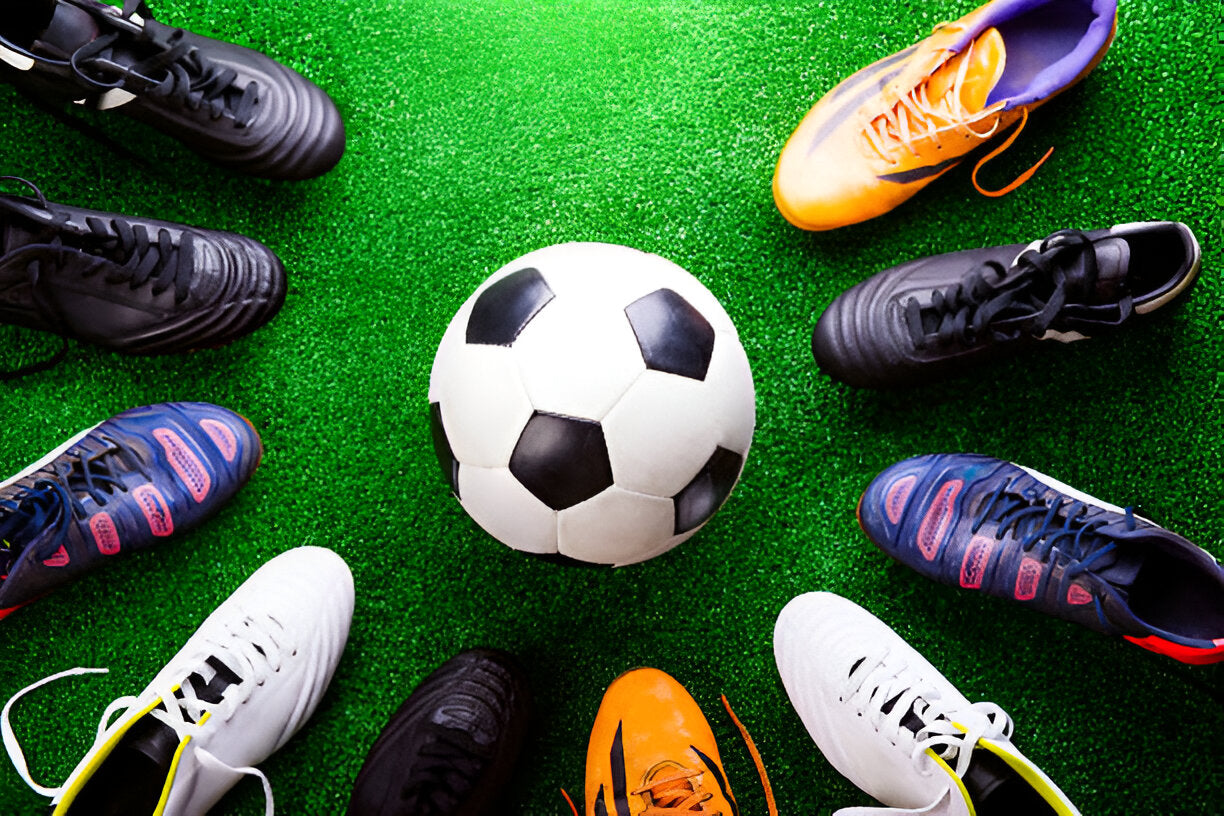Your performance in a soccer game will entirely depend on the type of footwear you choose to wear. It will not only impact your performance but also your confidence on the field. Whether you are playing on artificial turf or natural grass, the type of shoes you wear determines your comfort, grip, and ability to move effectively in any gameplay. Therefore, this brings us to the most critical question: What is the difference between turf shoes and cleats? Choosing the best option is essential for better field traction, grip, and safety. Knowing the difference between these football footwear will help you make the right choice.
This blog will explore the key differences between turf shoes and cleats, their unique features, and when to opt for each type.
Turf Shoes: Ideal for Artificial Surfaces
Turf shoes are specifically designed for artificial grass or turf fields. Artificial fields have become more common, particularly in regions where maintaining natural grass can be difficult, so the demand for specialized footwear like turf shoes has surged.
Key Features of Turf Shoes:
- Rubber Soles with Small Studs: Turf shoes' soles are their defining feature. Instead of the more extended metal or plastic studs on cleats, turf shoes feature shorter rubber studs or nubs. These provide adequate grip on the synthetic surface without digging into it.
- Comfort and Versatility: Turf shoes offer more comfort than cleats, making them suitable for long hours of play. They are lighter and often provide better cushioning, which helps reduce the impact on joints and muscles. Turf shoes are excellent for players prioritizing comfort and agility over sharp, quick stops.
- Enhanced Mobility: Because the studs on turf shoes are shorter, they allow smoother movements. This is particularly useful on artificial grass where longer studs can create too much grip, slowing your movements or making it difficult to pivot quickly.
When to Wear Turf Shoes: Turf shoes are the best option when playing on artificial turf surfaces. They offer the right balance of traction and comfort without damaging the turf. Whether practicing, playing a casual game, or competing at a mid-level tournament, turf shoes will provide the right amount of grip and speed.
Cleats: Optimized for Natural Grass
Cleats, also known as soccer boots in some regions, are designed for use on natural grass fields. If you frequently play on real grass, cleats will offer traction to navigate the softer and sometimes wet surfaces.
Key Features of Cleats:
- Longer Studs for Deeper Grip: Cleats have longer studs made from rubber, plastic, or metal, allowing them to dig deep into soft soil or natural grass. This feature is especially beneficial when wet, muddy, or uneven, as it helps players maintain balance and control.
- Sharp Turns and Quick Stops: The deeper grip provided by cleats allows for sharper pivots and more aggressive stopping power. If you're a player who relies on quick changes of direction or fast sprints, cleats are the way to go.
- Performance in Wet Conditions: Natural grass can become slippery when wet, making it difficult for players to maintain balance. Cleats counteract this problem by offering enhanced traction, ensuring you remain steady during sprints, tackles, and dribbles.
When to Wear Cleats: Cleats are ideal for games played on natural grass, especially in wet or muddy conditions. The longer studs provide a better grip on the softer surface, making them the footwear of choice for competitive matches or practices on natural grass fields.
Comparing Turf Shoes and Cleats
Now that we've explored the individual features of both types of footwear, let's break down their differences in greater detail:
| Feature | Turf Shoes | Cleats |
| Stud Length | Short rubber nubs or smaller studs | Long plastic, rubber, or metal studs |
| Surface Compatibility | Best for artificial turf | Best for natural grass |
| Comfort | More comfortable with better cushioning | It can be less comfortable due to stiffer soles |
| Traction | Moderate traction suitable for smooth, synthetic surfaces | Maximum traction for soft, uneven, or wet natural grass |
| Speed and Mobility | Easier to pivot and run smoothly | Great for quick stops and sharp turns |
| Durability on Surface | Safe for artificial turf, won't damage the surface | Can damage synthetic turf due to sharp studs |
| Injury Risk | Less risk of injury on turf due to better flexibility | Higher risk on turf; cleats can anchor your foot in place |
Safety Considerations
While both turf shoes and cleats are designed to enhance performance, safety is an essential factor that differentiates the two.
Turf Shoes: Since artificial fields are firmer than natural grass, turf shoes with smaller nubs allow for a little slide, reducing the risk of sudden impact or collision injuries. The flexible traction also reduces joint strain, particularly when making quick movements or turns.
Cleats: While cleats are necessary for natural grass, they can be risky to use on artificial turf. The longer studs can anchor your foot to the ground more firmly, which is excellent for grass but can pose a danger on synthetic surfaces. If your foot doesn't slide when needed, this can lead to unnatural twists or turns, increasing the risk of ligament injuries, particularly to the ankles or knees.
Do You Need Both Turf Shoes and Cleats?
For serious players, the answer is yes. Owning a pair of turf shoes and cleats allows you to adapt to different playing conditions. Here's why having both types of footwear can elevate your game:
- Performance Flexibility: Different surfaces require different footwear. With turf shoes and cleats, you'll always have the optimal footwear for the field, ensuring maximum performance in any game.
- Safety: Wearing the right shoes on a suitable surface reduces your chances of injury. As discussed earlier, wearing cleats on artificial turf or turf shoes on natural grass increases the risk of slips, falls, and potentially severe injuries.
- Enhanced Durability: Using the proper footwear for a suitable surface also extends the life of your shoes. Turf shoes used on natural grass may wear out faster, just as cleats used on turf can damage the synthetic surface and lose their efficiency over time.
Final Thoughts: Which Should You Choose?
Ultimately, the choice between turf shoes and soccer cleats depends on where you frequently play. If you're playing on artificial surfaces more often, a good pair of turf shoes should be your go-to choice. They offer better comfort and mobility and reduce risks of injury in synthetic fields. On the other hand, cleats are non-negotiable for natural grass fields, especially in competitive settings where quick, sharp movements are crucial.
However, it's worth investing in both if you're an avid soccer player who switches between surfaces. This will ensure you're always prepared, regardless of where your next game or practice occurs. So, gear up wisely and confidently and enjoy your time on the field, knowing you're equipped with the proper footwear!



